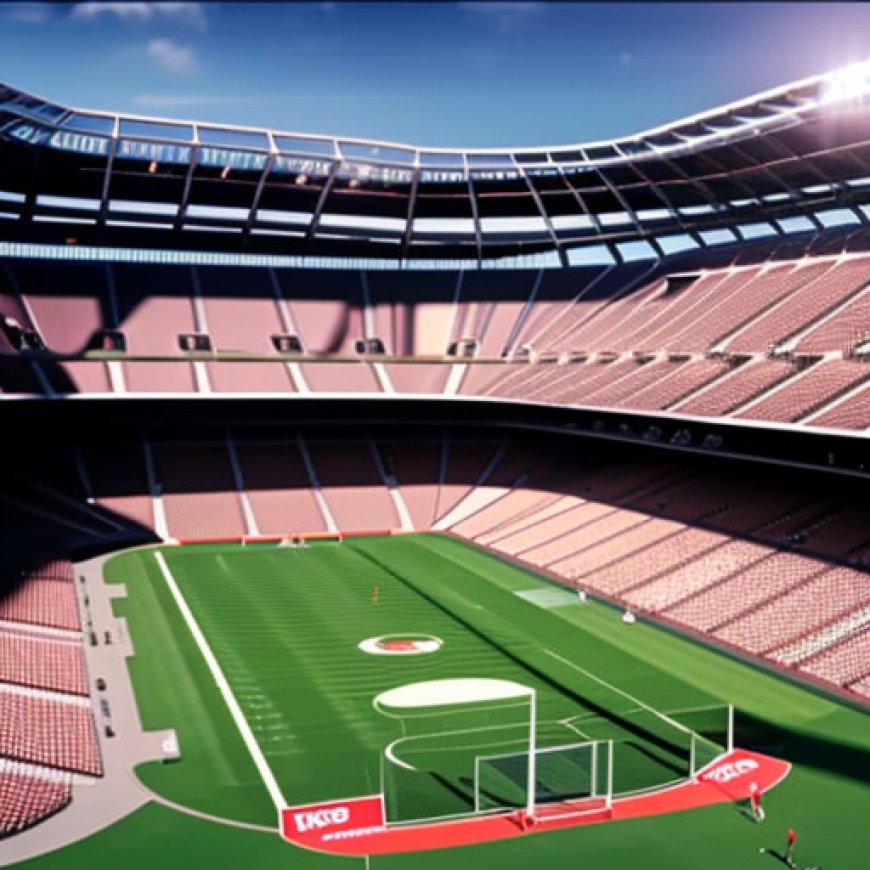Setting a new standard for energy-efficient and low-carbon design for professional sports facilities
Setting a new standard for energy-efficient and low-carbon design for professional sports facilities Seattle Daily Journal of Commerce


Seattle Storm’s New Energy-Efficient Center for Basketball Performance
May 30, 2024
Introduction
The Seattle Storm, a WNBA franchise, has set a new benchmark for professional sports facilities with their $64 million Center for Basketball Performance. The 50,000-square-foot, all-electric facility is not only designed to cater to the needs of elite athletes but also to meet high standards of environmental sustainability.
Sustainable Development Goals (SDGs)
The project aligns with the Sustainable Development Goals (SDGs) by pursuing LEED Gold certification, which emphasizes the facility’s commitment to sustainable building practices and reduced carbon emissions.
Design and Construction
The facility, designed by ZGF and Shive-Hattery, includes state-of-the-art amenities such as two courts, locker rooms, a strength and conditioning center, and a recovery suite. The building’s design incorporates low-carbon concrete requirements, significantly reducing its carbon footprint.
Energy Efficiency
- Heat pumps and efficient lighting systems have been installed to minimize energy consumption.
- The building envelope has been optimized to maintain temperature control.
- A solar roof array produces over 12% of the facility’s energy needs.
Athlete-Centric Design
The design of the Center for Basketball Performance prioritizes the athletes’ needs while maintaining a focus on sustainability. The use of healthy building materials and energy-efficient systems ensures that the facility supports both environmental goals and athletic performance.
Conclusion
The Seattle Storm’s Center for Basketball Performance stands as a testament to the potential of integrating sustainability into sports facilities. It serves as a model for future projects aiming to achieve the SDGs while supporting professional athletics.
Report compiled by Chris Flint Chatto, a high-performance building specialist at ZGF Architects, and Angi Rivera, Sellen’s director of sustainability.
Other Stories:
Analysis of the Article
1. Which SDGs are addressed or connected to the issues highlighted in the article?
The article addresses several Sustainable Development Goals (SDGs), including:
- SDG 7: Affordable and Clean Energy
- SDG 9: Industry, Innovation, and Infrastructure
- SDG 11: Sustainable Cities and Communities
- SDG 13: Climate Action
2. What specific targets under those SDGs can be identified based on the article’s content?
The specific targets under the SDGs that can be identified from the article include:
- Target 7.2: Increase substantially the share of renewable energy in the global energy mix.
- Target 9.4: Upgrade infrastructure and retrofit industries to make them sustainable, with increased resource-use efficiency and greater adoption of clean and environmentally sound technologies and industrial processes.
- Target 11.6: Reduce the adverse per capita environmental impact of cities, including by paying special attention to air quality and municipal and other waste management.
- Target 13.2: Integrate climate change measures into national policies, strategies, and planning.
3. Are there any indicators mentioned or implied in the article that can be used to measure progress towards the identified targets?
The article implies several indicators that can be used to measure progress towards the identified targets, such as:
- The percentage of energy needs met by renewable sources (solar roof array).
- The reduction in energy costs compared to similar facilities.
- The reduction in embodied carbon of the project’s concrete.
- The achievement of LEED Gold certification.
4. Create a table with three columns titled ‘SDGs, Targets and Indicators’
| SDGs | Targets | Indicators |
|---|---|---|
| SDG 7: Affordable and Clean Energy | Target 7.2: Increase substantially the share of renewable energy in the global energy mix. | The percentage of energy needs met by renewable sources (solar roof array). |
| SDG 9: Industry, Innovation, and Infrastructure | Target 9.4: Upgrade infrastructure and retrofit industries to make them sustainable, with increased resource-use efficiency and greater adoption of clean and environmentally sound technologies and industrial processes. | The reduction in embodied carbon of the project’s concrete. |
| SDG 11: Sustainable Cities and Communities | Target 11.6: Reduce the adverse per capita environmental impact of cities, including by paying special attention to air quality and municipal and other waste management. | Achievement of LEED Gold certification. |
| SDG 13: Climate Action | Target 13.2: Integrate climate change measures into national policies, strategies, and planning. | The reduction in energy costs compared to similar facilities. |
Copyright: Dive into this article, curated with care by SDG Investors Inc. Our advanced AI technology searches through vast amounts of data to spotlight how we are all moving forward with the Sustainable Development Goals. While we own the rights to this content, we invite you to share it to help spread knowledge and spark action on the SDGs.
Fuente: djc.com

Join us, as fellow seekers of change, on a transformative journey at https://sdgtalks.ai/welcome, where you can become a member and actively contribute to shaping a brighter future.







